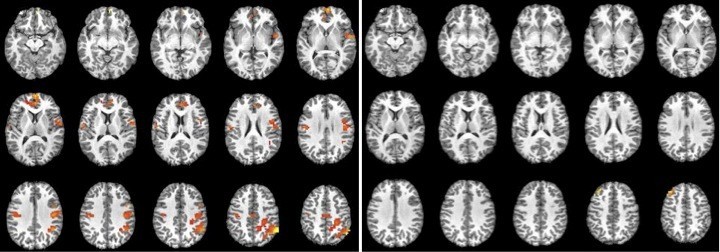fMRI lie detection / truth verification is supported by all peer reviewed scientific studies
The use of functional magnetic resonance imaging (fMRI) for lie detection / truth verification has been supported by humans studies in 87 original peer reviewed scientific journal articles. These peer reviewed scientific journal article studies listed 496 authors. They included researchers from 24 different countries (USA, UK, Canada, Australia, China, Japan, Netherlands, Switzerland, Poland, Denmark, Sweden, Germany, Russia, France, Israel, Austria, Italy, Spain, Korea, Hong Kong, Taiwan, Estonia, Brazil, Belgium).
All peer reviewed fMRI studies have had results that showed the technology works in lie detection and truth verification
5 Studies have been done with 3 tesla fMRIs and pattern recognition. 35 Studies have been done with 3 Tesla fMRIs, 17 studies have been done with older 1.5 and 4 tesla fMRIs, 10 studies have been done with older 1.5 and 4.0 fMRIs that analyzed results with group comparisons.
Multiple fMRI machines from the three major manufactures all have shown to work
Studies have used several types of MRI machines A 3.0 tesla MRI machine by General Electric was used for the measurements of Gary Smith. fMRI machines used in research studies have included fMRIs of 1.5, 3.0, 4.0, and 7.0 tesla field strength. These were made by three different Manufactures: General Electric, Siemens and Philips Corporations.
No peer reviewed research counters the unanimous claims that fMRI is able to detect lies and truth in humans.
Research has been ongoing for over 14 years and still there have been no results in the peer reviewed scientific literature that conclude fMRI does not work for lie detection and truth verification.
All other peer reviewed scientific published research using other scientific technologies also support the use of fMRI for use in lie detection and truth verification.
3 Studies used PET Scans (one of which also included a 3 Tesla fMRI), 6 Studies were done with functional NIRS which also sees the BOLD signal, and 12 studies used Brain Stimulation to check cause and effect of human brain locations indicated in lie detection.
Recent Improvements in analysis for fMRI lie detection / truth verification
a) Independent component analysis
Independent component analysis has been added to the analysis adding accuracy to results.
b) Pattern recognition technology
Pattern recognition and non-linear statistics has been added to increase accuracy of results as well.
The accuracy of fMRI lie detection / truth verification studies:
The accuracy of fMRI lie detection and truth verification in human individuals has improved with time and the use of improved technologies. The first study on individuals that concluded in 2005 (Langleben) was 78% accurate, while a more recent 2010 study (Ganis) reported a 100% accuracy. Of special note is the 2010 study by Sean Spence’s group showing the fMRI technology worked in 52 people with Schizophrenia even though half of this group was experiencing delusions during testing.
The believability of fMRI for lie detection and truth verification
The fact that all these original peer reviewed studies have studied fMRI lie detection and truth verification with different methodologies, different types of study subjects, different software, and MRI machines from different manufactures adds to the robustness of the conclusion that fMRI lie detection and truth verification works. This fMRI technology gains its power from the rich reproducible signal of information gathered by fMRI and the accuracy of the analysis is assisted by modern analytic technologies.
Federal Governmental support for fMRI:
Medicare and other medical insurers pay for fMRI for medical use. The Federal Government has CPT codes/ICD-9 codes for fMRI (70554, 70555, 96020).
